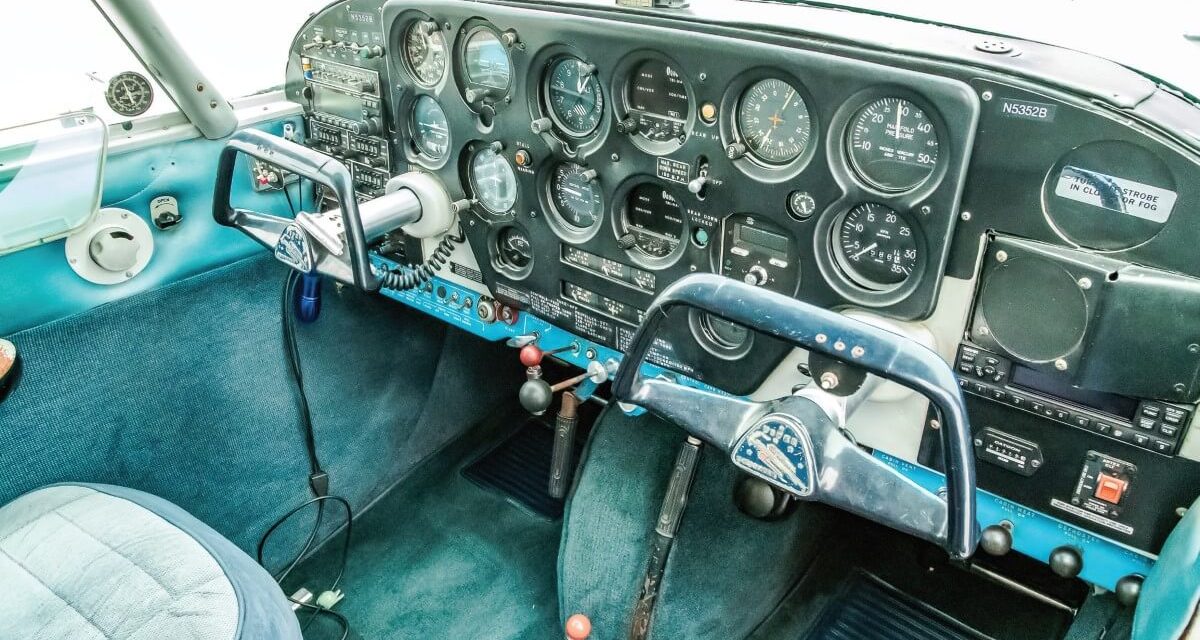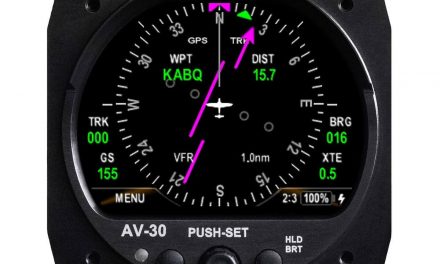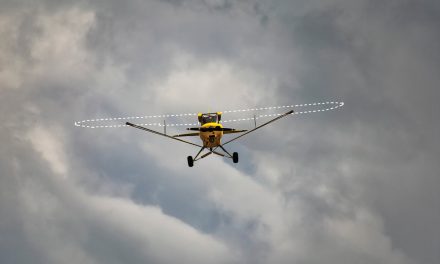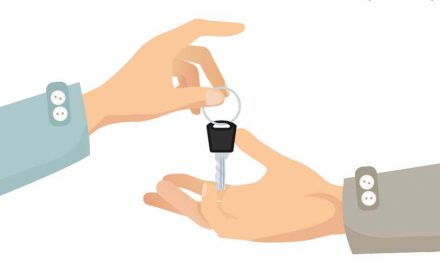Avionics is one thing that almost every owner wants to spend more money on. While there may be a few of you that don’t want better navigation or communication equipment, the majority of the pilots think nothing about spending a few bucks — or thousands — to improve the panel of their favorite aircraft. Since we spend the money, we should make plans on how to protect our investment. We try to protect our aircraft with hangars, insurance, and tiedowns, but how do we protect our avionics? How about the other stuff in the aircraft, things like handheld radios and GPS? If you buy insurance, you assume they are protected. But you do remember what assume means … right?
As I’ve mentioned before, any improvements to your aircraft should be noted and you should check on increasing the insured value with the insurance company. You don’t want to “under insure” your aircraft, especially if you just added a bunch of new gadgets. At the same time, you also don’t want to “over insure” or try to get more credit than the companies will give you.
For example, if you buy a bunch of handheld units — nav/comm, GPS, etc. — and add them to your aircraft you won’t be able to increase the value of the aircraft with the insurance company. Handheld — nonpermanent — avionics or accessories are typically not covered on aircraft insurance policies without specific endorsements. So, don’t add the value of handheld items to the insured value without getting a specific endorsement to provide coverage for those items.
This article originally appeared in the April 2019 issue of PIPERS magazine.
The in-between insurance problem
Sometimes, you might want to check with your homeowner insurance company. There is a gray area with homeowners. If the item is in the aircraft and someone steals it, it might not be covered by homeowners because it wasn’t in your home. Similarly, it might not be covered by your personal auto insurance either, unless it was in the auto when it was nabbed. Location is critical for each policy.
The importance of permanence
If you mount your handhelds in the aircraft with permanent connections — external antennas and power sources — you might be covered; check with your agent. Often if you bought nice and expensive headsets and you’re comfortable with leaving them in your aircraft, make sure they have permanent plug in locations to a permanent intercom or sound systems. So basically, if it is permanently mounted/installed it could be covered on the aircraft insurance policy.
One of the first things you should do is make a detailed list of the avionics, improvements and changes that can affect the aircraft’s value. But, be careful when adding avionics to the value of your airplane. When you add a new stack of avionics, just turning over the invoice won’t necessarily give you an increase for the total amount. Often the insurance company will not give you any installation credit. The installation labor cost, which can be substantial, doesn’t usually get added into the increase in hull value.
Valuing your aircraft
Let’s stop and think about this. When you annual the aircraft, you don’t increase the value of the aircraft each time you pay the annual bill. But often, the owner adds the cost of installation and avionics into the increase value. This is a gray area. If the value of the aircraft is pretty low to begin with — under book value — and you add the total cost for avionics — including labor — to the insured value, the underwriter will probably not question the value. If your aircraft is at book value or above and then you increase the value substantially, get out the proof of value, because the underwriters will want to know why. Remember, labor probably won’t be included.
What can you do? I suppose you can hope your avionics shop offers you a package price without the labor cost broken out on a separate line. Although I can’t say for sure if that would work. Whatever source of value you use, do increase the coverage. Garmin 430s are great units as long as they stay mounted in the panel of the aircraft. When they’re bouncing around stolen in the trunk of someone’s car, they don’t seem to have much use. Again, panel mounted units are covered by most insurance policies.
Read this article in the April 2019 issue of PIPERS magazine to see the author’s checklist on valuing your aircraft.
Deciding if a headset is for you
Let’s go back to headsets. Have you seen the cost of a nice pair of headsets? Anyone remember what it was like to fly without wearing a pair of headsets? I remember. I can also remember the ringing in my head and the inability to hear the controller. Not just because he was talking like a telemarketing professional, but because of the noise in the aircraft. What about the long-term effects? What was that you said?
If you’re glad you’re reading this instead of listening, maybe you’ve been affected already. Studies have shown that loud noises are bad. Here we are flying in a small to medium aircraft — light aircraft, open cockpit, and even ultralights, which are just as noisy. Me, I even have local proof. I have family members and friends that have spent years in the cockpit of an aircraft and are now hard of hearing, deaf, or going deaf. My father-in-law didn’t like to wear headsets because he claimed the old B-24 military headsets are what made them deaf! They didn’t use headsets then and now they have to wear headsets, and hearing aids, all the time.
Should you own a headset? I can’t tell you what to do. But it sure seems to work for me. If I were to go out headset shopping at the local aviation mall, I’d look into a good quality, active noise reduction unit. Cost used to be a factor, you know, cheap or low cost. I have to say, now the cost isn’t as important as protecting my hearing. I never thought they were worth the money until I started to fly with good headsets. Now I can hear all my favorite stuff from Aaron Tippin — country music’s down-home aviation buff and pilot — to Dick Dale — king of the surf guitar Skymaster fan — and still talk to ATC.
The intercom systems, built in and portable, can provide separation from my music selections and that new “stuff” called music.
Headset coverage
Now as far as aviation insurance coverage, most companies will cover a headset per seat if they have installed “jacks.” Most companies do have limits of how much they will pay for the headsets. One companies example is: “loss to communications headsets and hand-held avionics but only while in the care, custody or control of the Named Insured and only to the extent of the Named Insured’s financial interest in such communications headsets or hand-held avionics but in no event to exceed an annual aggregate maximum of $1,000 for all communications headsets and hand-held avionics.”
That’s hardly enough to pay for one headset, let alone two or even four! Which would indicate to me that you may not want to leave your headsets in the aircraft.
There is also an interesting exclusion in one of the company’s policies that states: “This insurance does not apply to mysterious disappearance of communications headsets or handheld avionics except when in the custody of a carrier for hire.”
My guess is that there are several claims for missing items that possibly ownership couldn’t be proven. This is an example of why you want a list of all your equipment, permanent and handheld, including serial numbers and photos. If you can’t prove you owned it, it’s hard to get paid when it goes missing.
Too much or not enough
Anyway, can you get too much in your panel? When do you quit? Personally, the more things the better. There can never be too many gadgets to play with. In a rational world, in which aviators don’t exist, the salvage value of the avionics could actually be worth more than the parts and pieces of the aircraft.
Some aircraft can be overshadowed by avionics and the value can’t be increased enough. In those instances, you must be careful to purchase enough insurance, so you are not underinsured. If you have a $30,000 panel in an old dilapidated aircraft, you might not be able to keep the aircraft in the event of a claim against the airframe. Let’s say, $30,000 in avionics, hull value of $30,000 and you have a hangar fall on the aircraft. Claims can pay you the $30,000 and sell the avionics for $20,000 — depreciated — and only lose $10,000.
They came out ahead. The salvage yard gets a stack of avionics that they can sell for $20,000 plus and what’s left of the airframe brings in a few extra dollars of profit. They came out ahead. And you? Well … “two out of three ain’t bad.”
On a side note, if you do not buy insurance, or you buy liability only, you won’t have any coverage for headsets, handhelds, avionics, etc. In a risk analysis, you would be what I would call self-insured. Remember, if you want to insure your aircraft for what you think it’s worth, you will probably need to provide a “proof of value” to the insurance company.
Make sure you have enough coverage for your avionics and for your handheld backup units. Contact your agent and ask. If not contact me, my names on the door! I’ll see if I can answer your questions.
This article originally appeared in the April 2019 issue of PIPERS magazine.





